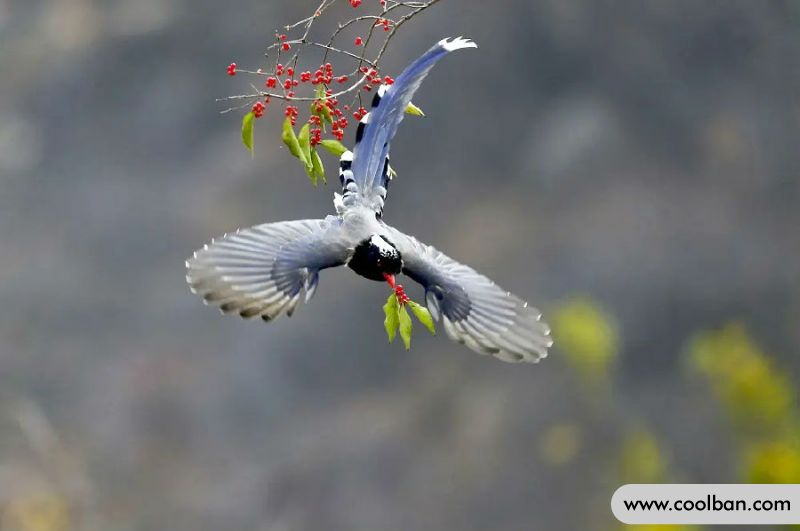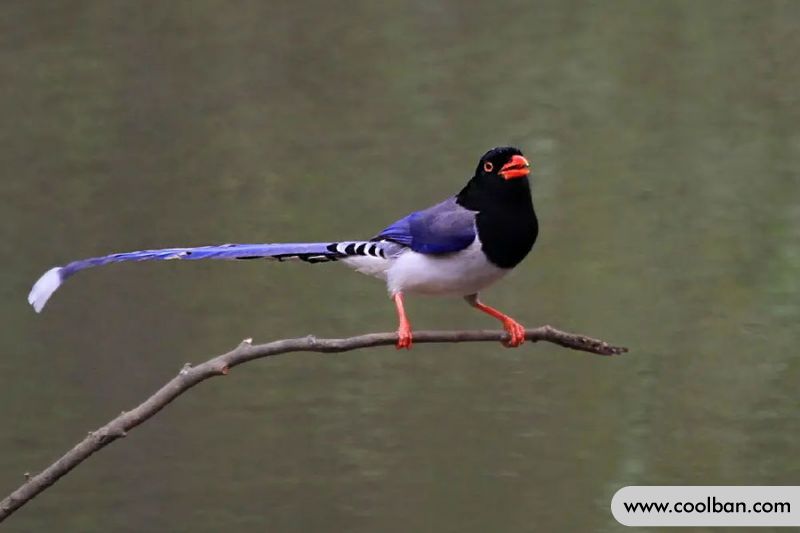Appearance and feeding points of red-billed blue magpie
The red-billed blue magpie is an elegant cage bird with a large body, red beak and feet, and a very nice slender, curved tail. The yellow-billed blue magpie is basically similar to the red-billed blue magpie in appearance. Except for the mouth, the yellow-billed blue magpie has a yellow mouth, except for a white spot on its head. The difference is still very obvious, and it is not difficult to identify in the wild.
The adult body length of the red-billed blue magpie is about 60cm, and the body surface feathers of the female bird are basically similar. The red-billed blue magpie is a relatively noble cage bird. Their bodies and backs are blue-purple, and their tail feathers are long, especially the middle two. The tail is white with a red beak and red feet. It is more solemn and elegant, and is also known as the long-tailed blue magpie.

Appearance characteristics of red-billed blue magpie
The red-billed blue magpie is a beautiful cage bird with similar plumage in males and females. Forehead, top to back of neck, side of head, side of neck, chin, throat and upper chest are all black with white, blue-white or purple-grey feathers on neck from top to back, with increasing spots from top to back more. As it enlarges, a large plaque develops from the top of the head to the nape of the neck, and sometimes even to the center of the upper back.
The back, shoulders, and loins are purplish-blue-grey or grey-blue dyed-brown, and the tail coverts are lavender or light-blue-grey, with black terminal spots and white subterminal spots at the ends. The tail is long and convex. The central tail feathers are blue-grey with white terminal spots, the rest of the tail feathers are purplish-blue or blue-grey with white terminal spots and black subterminal spots.
The wings are dark brown, the base of the outer feathers of the primary flight feathers is purple-blue, and the ends are white. The throat and chest are black, and the rest of the lower body is white, sometimes dyed blue or yellow. The iris is orange, and the mouth and feet are red.

Feeding points of red-billed blue magpie
Because the tail feathers of the red-billed blue magpie are relatively slender, it is recommended to use a larger bird cage for display when raised in an artificial environment, and it is not suitable to be raised in a bamboo cage with less ornamental value. This kind of bird is relatively easy to raise and does not have high requirements on the living environment.
Some people use a rope to tie their necks and put them on a shelf to raise them. The effect of raising them is better. The artificial diet consisted mainly of eggs and rice, while feeding a small amount of oriole mixed meal and raw meat, as well as fruits and vegetables. Feed small amounts of insects every other day or every day.
The red-billed blue magpie is very hardy and can survive cold winters in icy conditions. In the non-freezing season, providing enough bath water every day is good for health. In the rearing environment, red-billed blue magpies often have the habit of storing food, such as hiding insects or pieces of meat in the gaps of their cages for later consumption. To prevent food spoilage, it needs to be removed in time.

Like other birds, red-billed blue magpies love to eat insects and other animal foods. Of course, plant fruits are also their favorites. It is a typical omnivorous bird and is easy to raise. It is one of the important ornamental birds. There are many exhibitions in various zoos, and there are many individuals raised and eat a lot of pests, so the benefits are great.
Common animal food types include beetles, locusts, grasshoppers, flies, katydids, crickets, lepidopteran larvae and other insects, as well as spiders, snails, worms, fireflies, frogs, lizards, young birds, bird eggs and other small invertebrates animals and vertebrates.
Plant food is mainly the fruits and seeds of various trees and shrubs, and occasionally crops such as wheat and corn.
